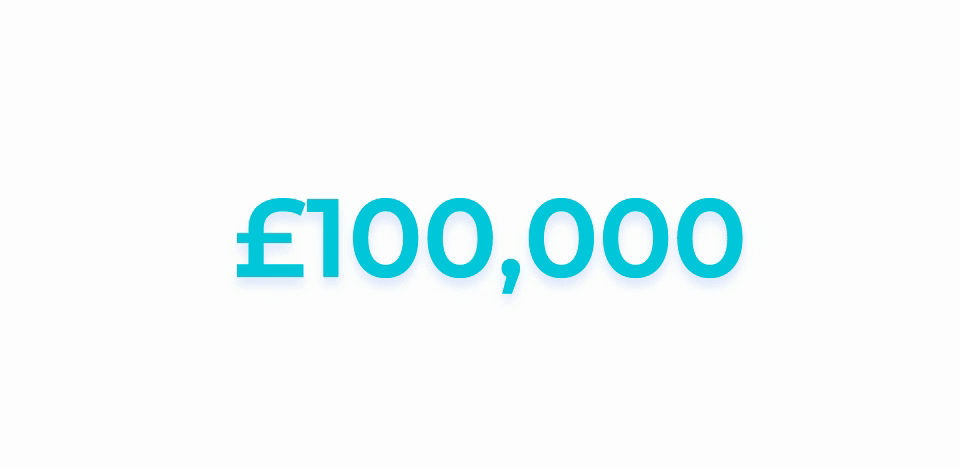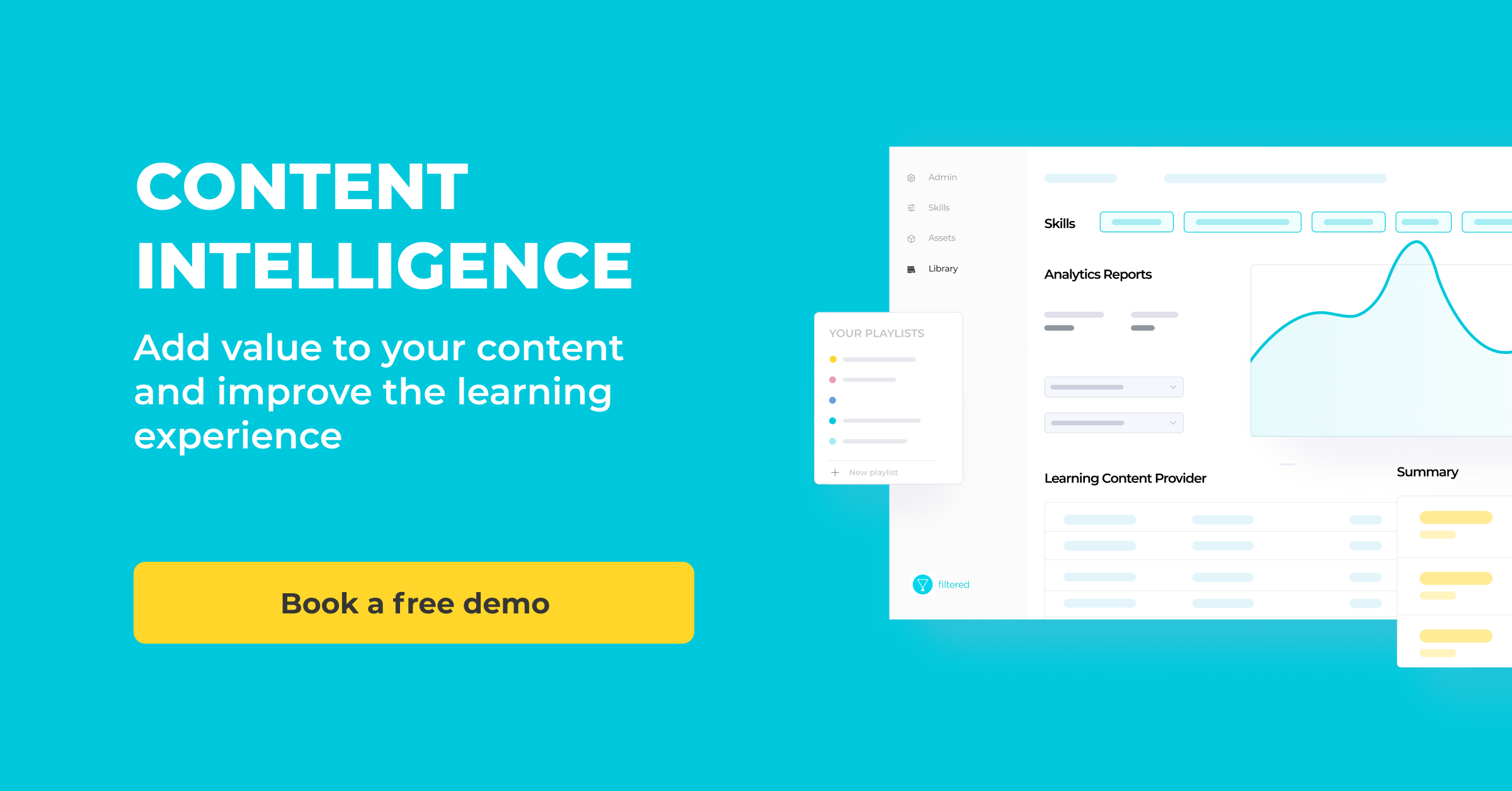Managing learning resources can be a challenging task, especially since most large organisations end up with easily more than 100,000 learning assets at their disposal. We are in the midst of a learning content overload crisis.
L&D’s job is to make sure that these resources are kept up-to-date, organised, tagged and well... used by employees. But how can L&D professionals succeed at ongoing learning content management while also juggling all their other pressing responsibilities to upskill their workforce? Here are three things to consider to make managing learning resources just a little bit easier and more effective.
1) Different types of learning resources
Before we go into the details and actionable steps on how to manage learning resources, there’s some groundwork that we need to lay in terms of what are the kinds of content and is unique about each.
At Filtered, we classify learning resources or learning content into 3 categories:
- Proprietary learning content
This is the content that your company creates internally and it's unique to you. Work-related proprietary content can be a very powerful resource type to upskill your workforce, thanks to its specificity and relevance. However, it is also the type of content that gets out of date the fastest and, for curators, it is a hard one to tag due to missing or low-quality metadata. While these resources work for your organisation, it is difficult to benchmark it against other content in learning libraries. - Learning content libraries
This is the generic library content that you get when purchasing a number of licenses for your team. These are used by other businesses, but there are also differences between the types of generic library providers. The most common are: - General-purpose: e.g. Skillsoft, LinkedIn Learning, Virtual Ashridge
- Format-focused: e.g. getAbstract, HBR, McKinsey
- Market places: e.g. Udemy
- Aggregators: e.g. Go1, Open Sesame
- MOOCs: e.g. FutureLearn, EdX, Coursera, Udacity
- Specialists: e.g. Pluralsight
- Web crawlers: e.g. AndersPink, OfCourseMe
- Web content
This is where the options are almost endless. You can learn from blogs written by experts, wikis and discussion forums filled by experienced people, influencers on Twitter, LinkedIn and YouTube - the list goes on. Yet Google’s most recent estimate has the total amount of web content sitting at around 130 trillion pages. And most of that will probably not be very good or relevant.
Learning is most potent when it draws from the widest pool of human experience. Learning resources on their own are of course not the answer to effective learning, but they are the starting point. But how do we identify the most relevant learning resource piece?
The glue that binds it all together is skills. Skills are the common currency of work, and we use them to understand people’s ability to complete their roles and tasks on the one hand, and learning content’s potential to increase that ability on the other (to learn more about how to define skills and build strategic skills frameworks, head over to our in-depth Skills Landscape lightpaper). In the meantime - tags are the means by which we codify and scale that understanding of skills and link it to content.
2) Why content tagging is important & how to do it
Good tagging is an essential enabler of effective information exchange and learning. And almost no one gets it right. Most learning resources are poorly tagged - either too broadly or not at all.
This leads to less accessible learning for your team, and irrelevant results from the recommendations engine within your learning stack. If your team can’t find the resource they need - you need to step up your tagging game.
A foundational step here is tagging all of that content with one or more of the skills from your transformative skills framework. This can be complex to achieve if you have hundreds of thousands of learning resources, however, here are some of the tips to make it work:
- Define skills: It’s crucial that skills are well-defined and well-thought-out as part of the content learning tagging process.
- Process: Process matters. Think through how your tagging process will work and choose what’s most efficient for curators.
- Revise native tags: Pre-filled tags can make the process go faster. But, much of this metadata is often surprisingly missing, partial or inconsistent and unindexable.
- Get extra eyes: For the content tagging that’s most essential to your organisation, make sure curators' work is marked independently. This allows for a second (or third) set of eyes.
- Review the size: How much content needs tagging? Before diving into a tagging process, it’s valuable to review some high-level summary statistics on the content you want to tag.
- Data, data, data: Measure your tagging. Generate data on the usefulness of your content libraries, measure its provision against your skills frameworks and find skills gaps.
To make your content even more relevant, you should make your learning resources as unique to your teams as you possibly can. Combine skills with some of the factors below to get to a smaller set of material which will go down better and make more of an impact than lists of endless, generic content.
- Add industry examples to your content
- Draw examples from the relevant business functions
- Distinguish between perishable vs durable (evergreen) content
- Make or don’t make your content gender-related (whichever way you choose to go, go intentionally, with an awareness of what’s possible. Note that there are at least two issues here - what the content is about and who it’s written by. Both, or neither, or just one might be more important for your intended audience.)
- Same as above, you may decide to make or don’t make your content race-related
- Factor in popularity if there’s a content everyone should have an awareness of
- Differentiate between depth and format of your learning resources
- Examples of geographies (EMEA, USA, etc.) can make content more closely related to
- Make an intentional judgement about mentions of controversial issues
- An awareness of current affairs may be directly or indirectly useful for many people in your workforce
Much of what we discussed above are best practices to consider when manually tagging your learning content. But - manual tagging is a lot of (unnecessary) work. Intelligent, skills-focused NLP algorithms can hugely accelerate the curation process so that within a few minutes you have a small, manageable subset of content which is fit for the skills and behaviours and awareness that your organisation wants to see more of in your colleagues. Your commentaries, exercises, pathways and campaigns will be all the more nourishing and appreciated for this.
3) Succeed at ongoing learning curation
Once you’re up and running, it is time to remember to regularly evaluate your learning resources, promoting the good and retiring the bad. This is how Filtered helps our clients to do exactly that.
First, we make a balanced scorecard assessment. We look at a range of measures which all contribute to potential conclusions. Those are the obvious clicks and completes, or it can also be usefulness scores if you have this type of data in your LXP. Whether this functionality is available or not, you should go directly to learners and run automated surveys of learning resources to find out if applied the knowledge in their roles and if it contributed to business outcomes.
This could become a messy process, so we’d recommend getting the numbers at the start (clicks and completes), nuance towards the end and combine the two perspectives. By adopting an approach like this, you can generate a report which ranks individual pieces of content and aggregates up to rank providers according to that metric. You should do this regularly, ideally quarterly, in order to discuss that data to then retire or promote pieces of content or entire libraries if it comes to it.
You should also regularly assess relevance across all of your libraries to your skills frameworks as they evolve, ideally using a tool such as Content Intelligence.
Once you collect this data, you can use it not only for ongoing curation, but also during procurement when negotiating with library suppliers.
However, as with any mix of quantitative and qualitative data, to turn it into insights that inform your skills strategy, you should mix human consultation and algorithms. This data will then help you inform two levels of decision making. Strategic and tactical.
With any data-led transformation process, the key to success lies in human influence. Businesses do have a huge amount of data that can help their learning, and accessing it is essential. But, without people who can get clear answers from disparate data and understand what those answers mean in an L&D context, organisations are working with hot air.
To take your learning resource management game to the next level, check out our full Buyer's Guide to Learning Content.



